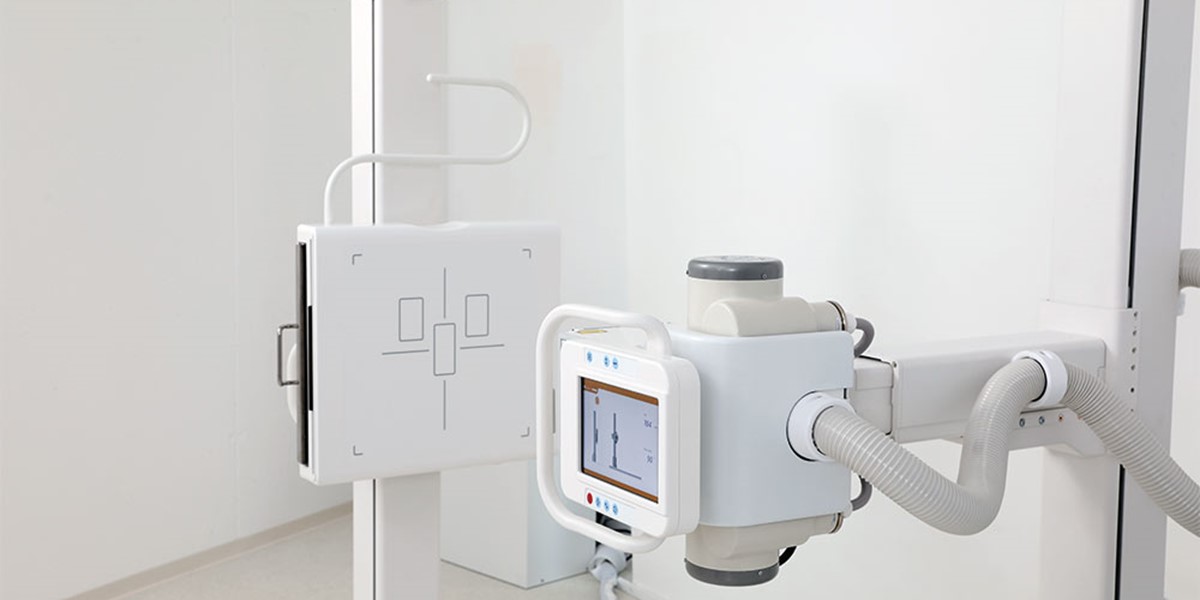Find out more about how this website uses cookies to enhance your browsing experience.
Revolutionise your x-ray imaging workflow with DR technology

Do you currently use CR or film? Or are you thinking about adding an x-ray service to your clinic? With the development DR technology and the reduction in price of DR systems, having leading x-ray technology in your clinic is no longer an expensive dream!
Here we discuss the difference between CR and DR, so you can decide what is right for your clinic.
Computed Radiography (CR) and Digital Radiography (DR) are both imaging techniques used in medical radiology to produce digital X-ray images. While they are similar in some ways, they differ in their underlying technology and workflow.
Computed Radiography
CR is an older technology that predates DR. It uses a cassette-based system that contains a photostimulable phosphor plate. When the plate is exposed to X-rays, the energy is stored in the phosphor material. After exposure, the cassette is processed in a CR reader, which uses a laser to stimulate the stored energy in the phosphor plate. This emitted light is then captured by a photodetector and converted into a digital image.

Advantages of CR:
- Cost-effective: CR systems are typically less expensive than DR systems, making them a more affordable option for some healthcare facilities.
- Portability: The cassettes used in CR can be transported and shared between different locations easily (although the plates need to be taken back to the processor for developing).
- Flexibility: Multiple plate sizes offer greater flexibility
Disadvantages of CR:
- Workflow: CR requires a manual step of processing the cassettes in a dedicated reader, which can slow down the imaging workflow compared to DR.
- Space: a processor is required which can take up precious space in small clinics
- Image quality: CR images may have slightly lower spatial resolution and dynamic range compared to DR, as the phosphor plates have limitations in capturing fine details.
- Maintenance: with multiple moving parts, CR systems can be expensive to maintain.
Digital Radiography
DR directly captures X-ray images using a digital detector system. Direct DR uses a flat-panel detector (FPD) that consists of a scintillator layer and an array of electronic photodiodes. When X-rays pass through the patient's body, they interact with the scintillator, which converts the X-ray energy into visible light. The photodiodes then convert the light into an electrical signal, which is directly digitized into a high-quality digital image and sent to a viewing monitor wirelessly or through a cabled set-up.

Advantages of DR:
- Speed and efficiency: DR provides near-instant image acquisition and eliminates the need for cassette processing, allowing for a faster imaging workflow.
- Image quality: DR typically offers higher spatial resolution, wider dynamic range, and better image quality compared to CR.
- Dose reduction: DR systems are often more sensitive to X-rays, allowing for lower radiation doses to be used while still producing diagnostic-quality images.
- Flexibility: the CelticSMR DR systems can be retrofitted to any current set-up, ensuring easy installation
Disadvantages of DR:
- Cost: DR systems tend to be more expensive than CR systems, making them a larger investment for healthcare facilities.
- Protection: requires protection from dropping or mishandling.
In summary, while both CR and DR produce digital X-ray images, CR is an older technology that relies on phosphor plates and requires a cassette-based system and separate reader. DR, on the other hand, directly captures X-ray images using digital detectors, offering faster image acquisition, higher image quality, and dose reduction benefits. With the price of DR systems reducing, it is becomming ever more appealing to the majority of practices.
If you’d like to learn more about your options for upgrading to digital X-ray, please feel free to email sales@celticsmr.co.uk or call 0800 279 9050 to speak with a dedicated Account Manager.